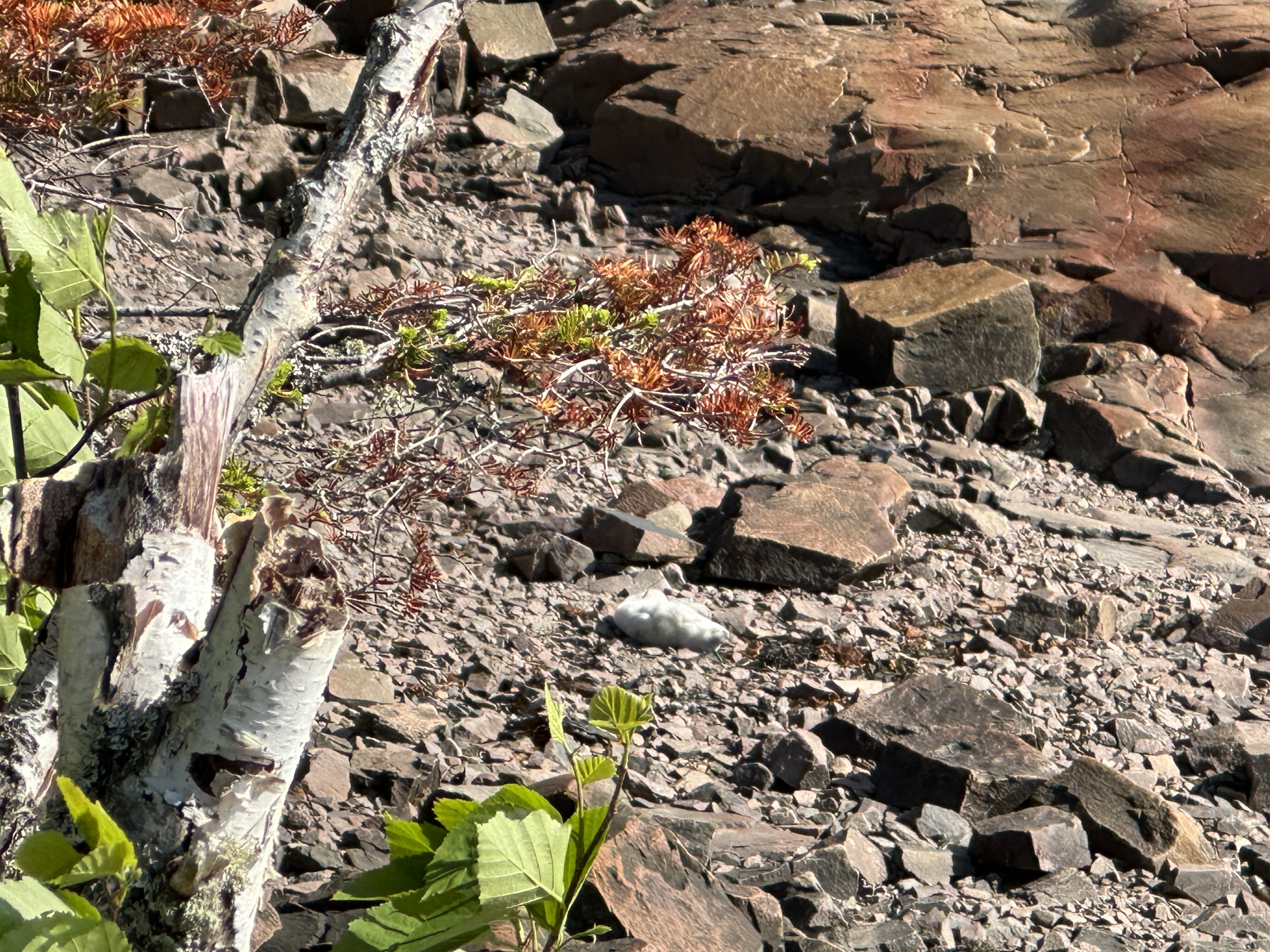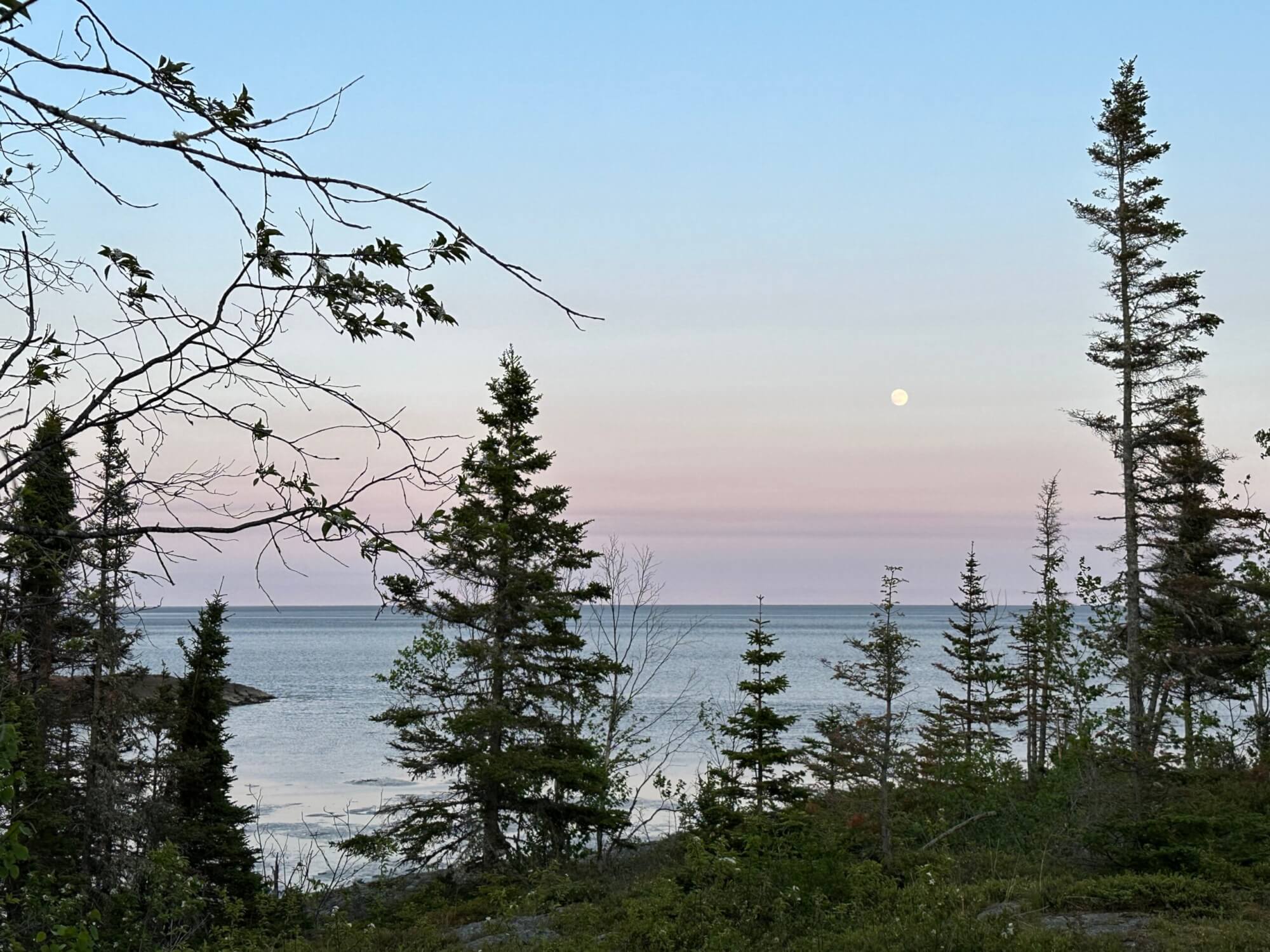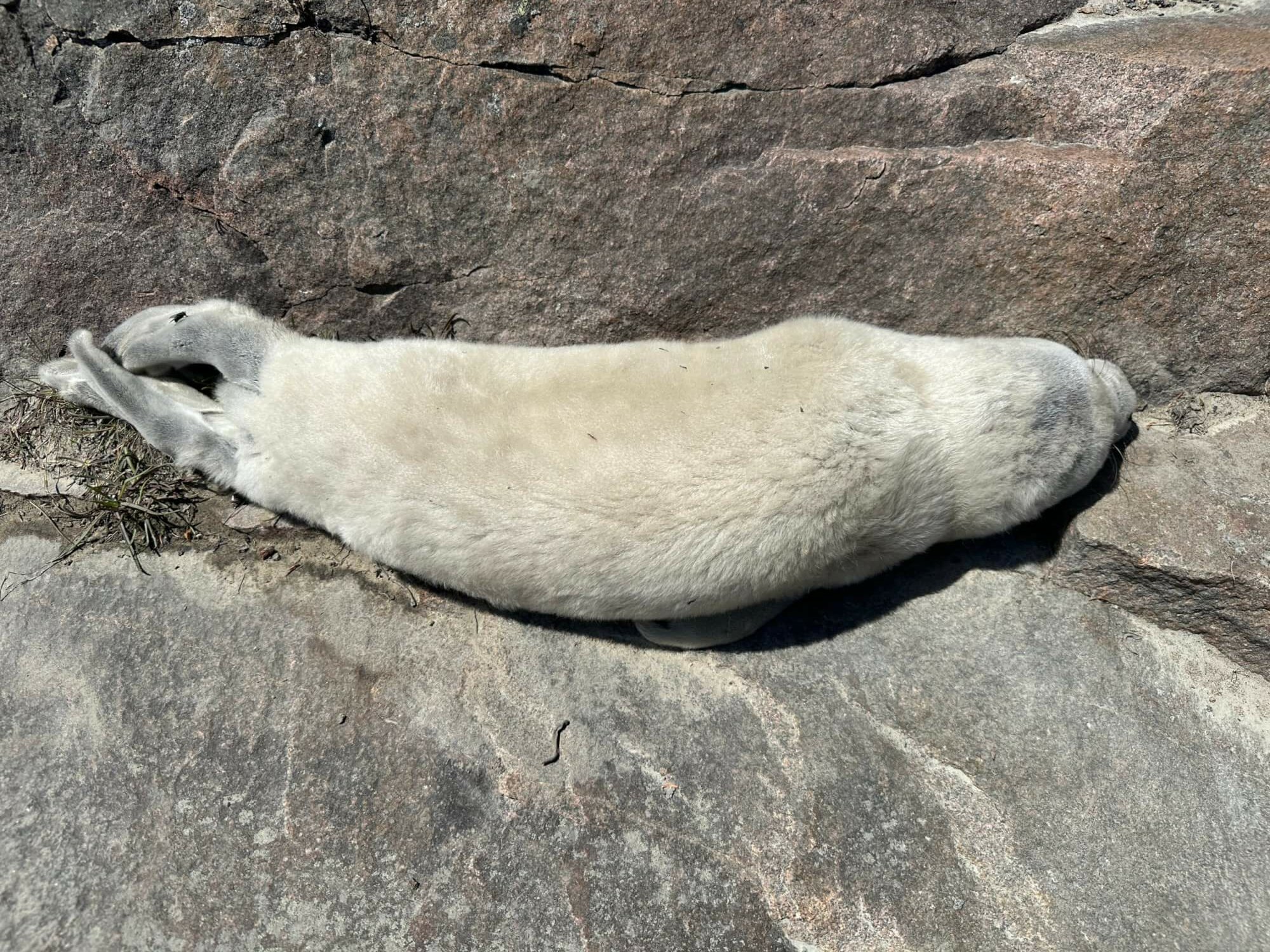It’s late morning on Friday, June 2, when the phone rings. It’s the Quebec Marine Mammal Emergency Response Network (QMMERN) calling me for my help as a volunteer responder. They received a report from some tourists who had come across a young seal near the boat launch in Ragueneau in Quebec’s Côte-Nord region. The person responsible for following up on the case tells me the seal still has its lanugo. Just this one word was enough for me to understand that we were dealing with an individual born relatively recently…I’m requested to go to the site and take photos and videos. This documentation will be sent to a veterinarian to provide him with a better overview of the situation. I am also tasked with answering questions and educating any curious onlookers who might arrive, in addition to setting up a security perimeter to avoid disturbing the pup.
I quickly grab my pre-packed intervention bag (time to feel like Dora the Explorer for a second!) and some food, as I don’t know how long I’ll be there. Next time, I’ll take an extra minute to pack some warmer clothes, too! About a half-hour separates me from my destination. And I’m off!
By the time I arrive to the scene, the tourists are already gone. I try to locate the seal while talking on the phone with the case handler at UMM. I attempt to ascertain a little better where it is so as not to approach it directly. I slowly make my way forward. And all of a sudden, there it is on a rock, right in the middle of the kayak put-in area. I turn back as discreetly as I could, despite all the emotion of such undesired proximity. The tiny, all-white pup lets out a yelp; I just disturbed it myself!!!
I take a few videos and photos, concealed behind the trees at the farthest point that would still allow me to capture clear images . It seems to be stuck on this same rock since last night’s high tide. The decision is made to cordon off the site and put up posters to safeguard the area against disturbance.
The tide rises but peaks before it reaches the seal. People are coming and going on the road leading to the boat launch, some by car, others on foot. I chat with a few of them, and no one tries to approach the seal pup. In order to ensure an on-site presence, I stay near my car most of the time, or in it to escape the biting wind. Occasionally I return to the seal pup and shoot some more videos. I observe it through my binoculars to try to better understand what it is doing and study its body in more detail. I can see that its dried out umbilical cord is still attached. Between naps, it occasionally twists and rolls over on its rock. It is more active in the late afternoon. It shows a bare patch on its neck, which we will try to better assess later. At 5:00 p.m., as the traffic is quite sparse, I am told that I can leave.
Back home, I study my video footage again, zooming in to get a better look. I realize that the pup was searching with its snout and trying to suckle the rock by making pressure movements with its flipper… This leaves me with the impression that it is not yet weaned. Early that evening, still at my place , I get a funny feeling that the pup might not be given all the peace and quiet it needs. Given that it’s Friday evening and it’s a fairly busy place, I head back to the scene!
When I get to the site, I see a truck parked at the kayak launch. Apparently, someone entered the area despite the posters and warning tape. I take some more videos of the seal, which is still on its rock. It’s more active than it was in the afternoon and is trying to move around. It was at this point that I could see that it was rubbing its neck on the sharp edge of the rock above while trying to pull itself up, which could explain the patch of missing fur on its neck.
Meanwhile, somebody tells me that this pup was coaxed back into the water on Thursday by someone who thought they were doing the right thing. Thus, it apparently left the boat launch area and ended up in this cove, isolated from the rest of its colony. The entire weekend, sea breezes (Translator’s note: winds blowing toward the landmass) meant that there was little chance this pup’s mother would be able to pick up its scent or hear it.
I see a kayaker paddling back to shore. As soon as he gets within earshot, I ask him to take his craft out of the water at the clearing in the small woodlot so as not to come too close to the seal. He argued that he wouldn’t touch the animal and explained that he had passed by earlier and that the seal barked. I told him I could help him get his kayak out, but that he couldn’t come back this way again. He understands. In fact, his father and his daughter arrive via the usual access, where they find themselves within two metres of the whitecoat! They turn back. Once everyone had gone, I left as well.
On Saturday , the pup was at the foot of its boulder. It explored a grassy area before working its way back down toward the water with the tide. It let out a few yelps and raised its snout to get a whiff of the sea. Following this laborious little ramble, the seal took a long nap. Later it would wake up after being lapped by a few waves during the incoming tide. Struggling up the slope with all its might, the young seal grows increasingly lethargic before ultimately falling asleep in the shade of a boulder. I’m increasingly overwhelmed by a sense of helplessness…
On Sunday, the animal was found lifeless by an individual enjoying a snack on the picnic table inside the cordoned off area. Upon my return to the site, I realize that the pup appears to have reached higher ground than last night’s tide. The animal was collected for necropsy.
If you happen upon a seal on the beach, avoid approaching within less than 100 metres. If it’s a stranded pup, do not hesitate to report it if you think it is injured, sick (loud breathing, coughing or runny nose), dead or at risk of being disturbed by human activity, by contacting the Quebec Marine Mammal Emergency Response Network (QMMERN) at 1-877-722-5346. It is forbidden to feed seals, interact with them, move them or force them to move.
Par Andréanne Sylvain, bénévole RQUMM













